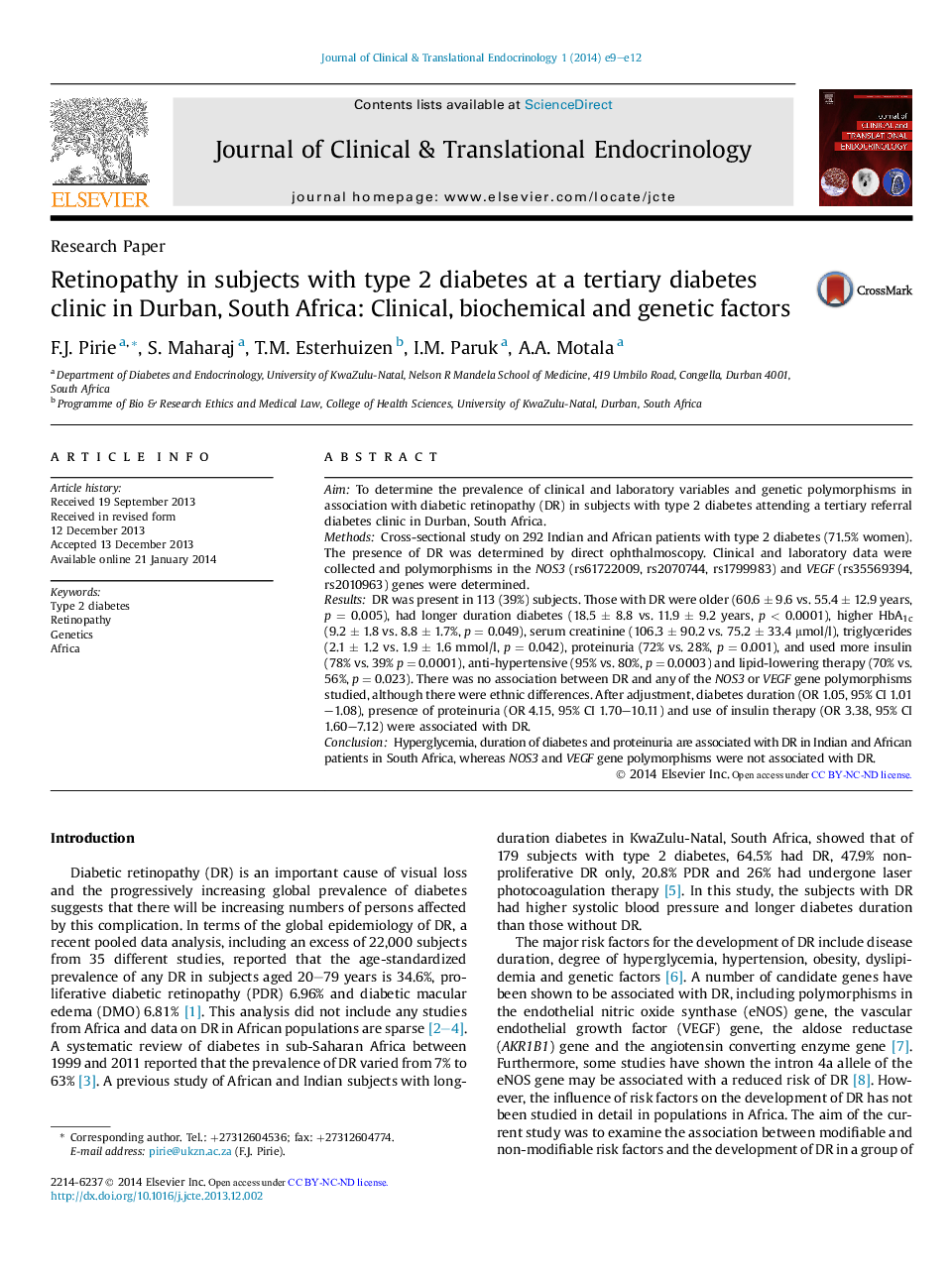| Article ID | Journal | Published Year | Pages | File Type |
|---|---|---|---|---|
| 2804057 | Journal of Clinical & Translational Endocrinology | 2014 | 4 Pages |
AimTo determine the prevalence of clinical and laboratory variables and genetic polymorphisms in association with diabetic retinopathy (DR) in subjects with type 2 diabetes attending a tertiary referral diabetes clinic in Durban, South Africa.MethodsCross-sectional study on 292 Indian and African patients with type 2 diabetes (71.5% women). The presence of DR was determined by direct ophthalmoscopy. Clinical and laboratory data were collected and polymorphisms in the NOS3 (rs61722009, rs2070744, rs1799983) and VEGF (rs35569394, rs2010963) genes were determined.ResultsDR was present in 113 (39%) subjects. Those with DR were older (60.6 ± 9.6 vs. 55.4 ± 12.9 years, p = 0.005), had longer duration diabetes (18.5 ± 8.8 vs. 11.9 ± 9.2 years, p < 0.0001), higher HbA1c (9.2 ± 1.8 vs. 8.8 ± 1.7%, p = 0.049), serum creatinine (106.3 ± 90.2 vs. 75.2 ± 33.4 μmol/l), triglycerides (2.1 ± 1.2 vs. 1.9 ± 1.6 mmol/l, p = 0.042), proteinuria (72% vs. 28%, p = 0.001), and used more insulin (78% vs. 39% p = 0.0001), anti-hypertensive (95% vs. 80%, p = 0.0003) and lipid-lowering therapy (70% vs. 56%, p = 0.023). There was no association between DR and any of the NOS3 or VEGF gene polymorphisms studied, although there were ethnic differences. After adjustment, diabetes duration (OR 1.05, 95% CI 1.01–1.08), presence of proteinuria (OR 4.15, 95% CI 1.70–10.11) and use of insulin therapy (OR 3.38, 95% CI 1.60–7.12) were associated with DR.ConclusionHyperglycemia, duration of diabetes and proteinuria are associated with DR in Indian and African patients in South Africa, whereas NOS3 and VEGF gene polymorphisms were not associated with DR.
